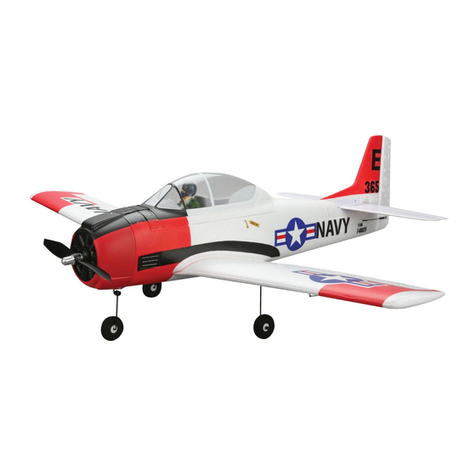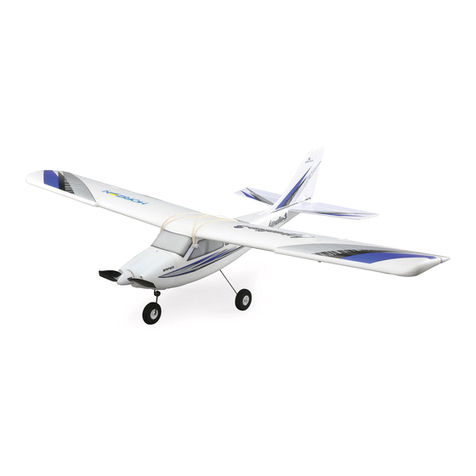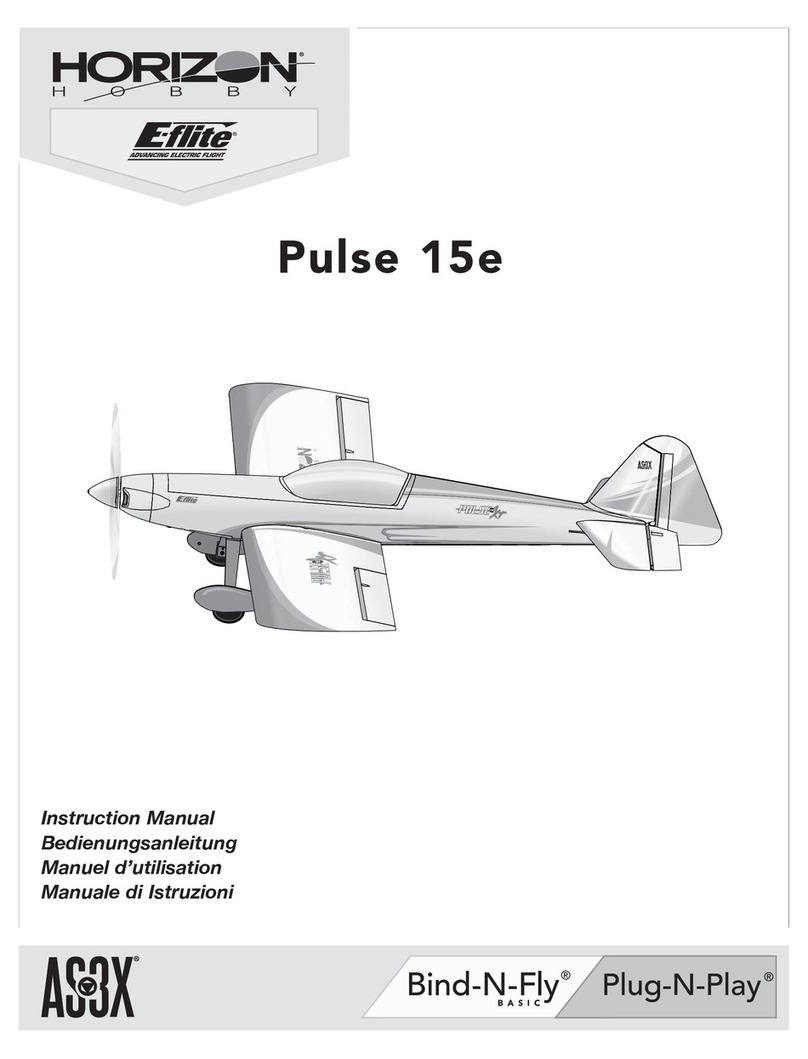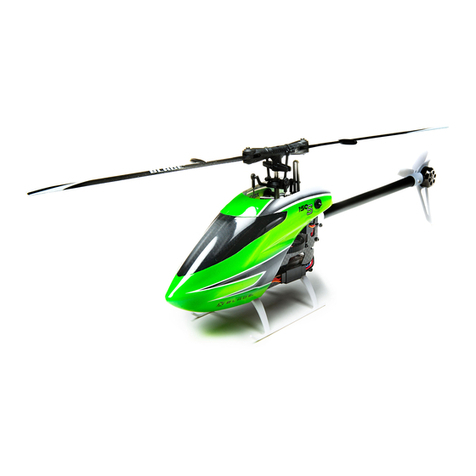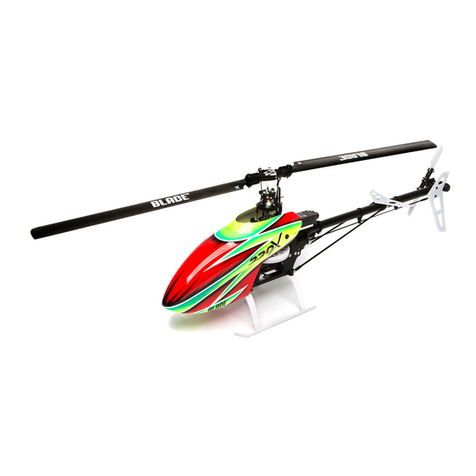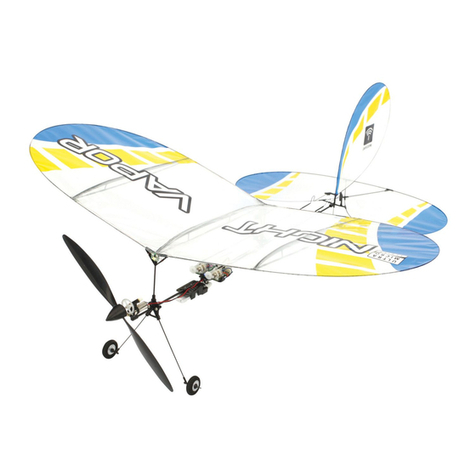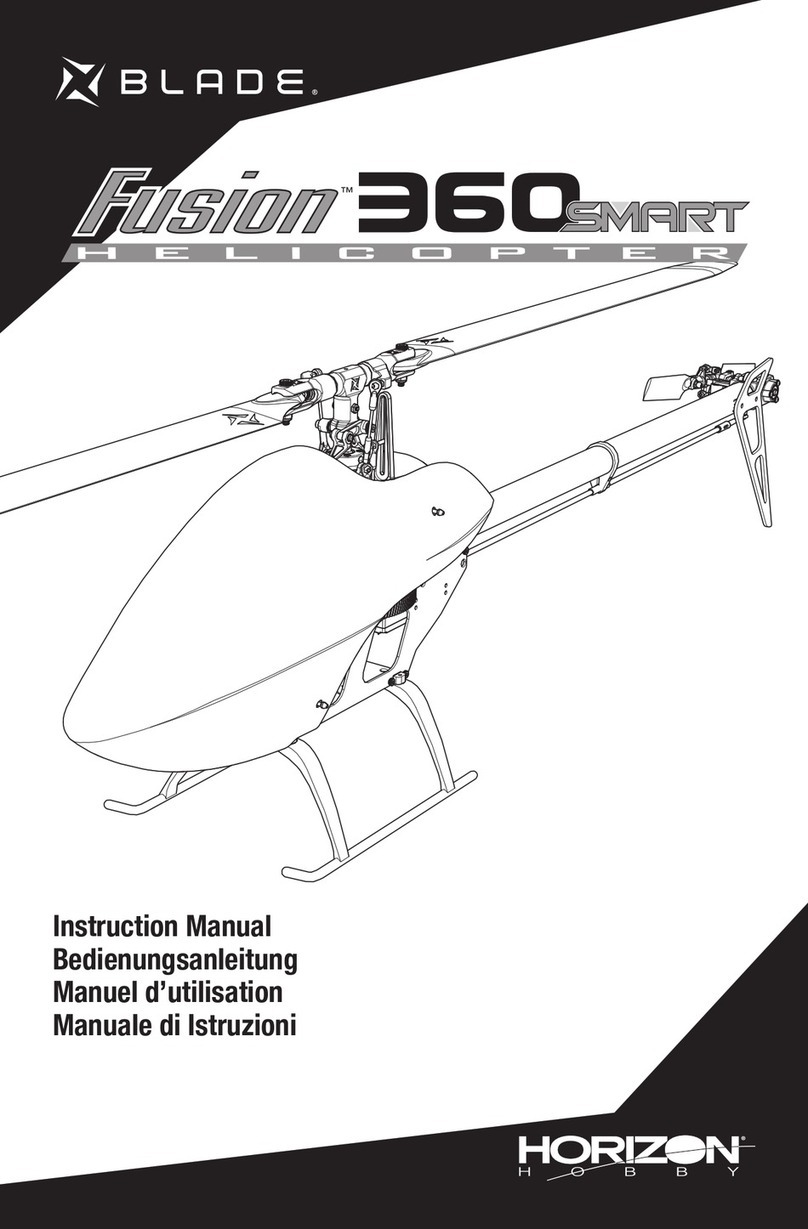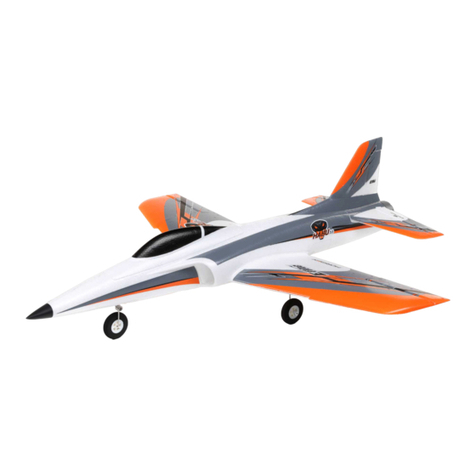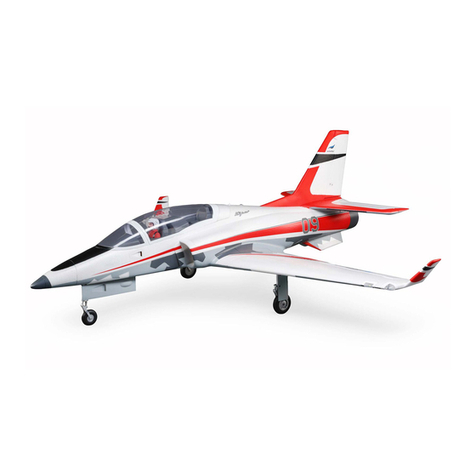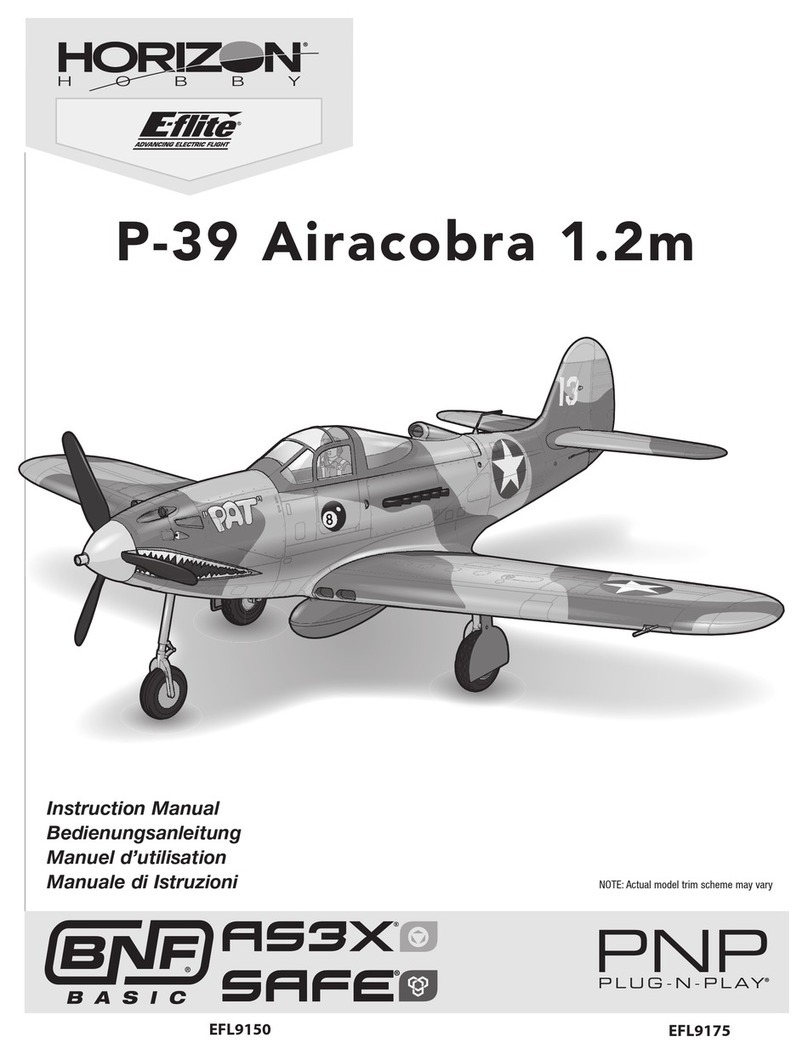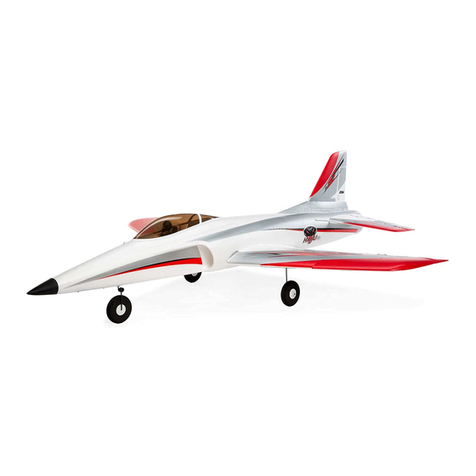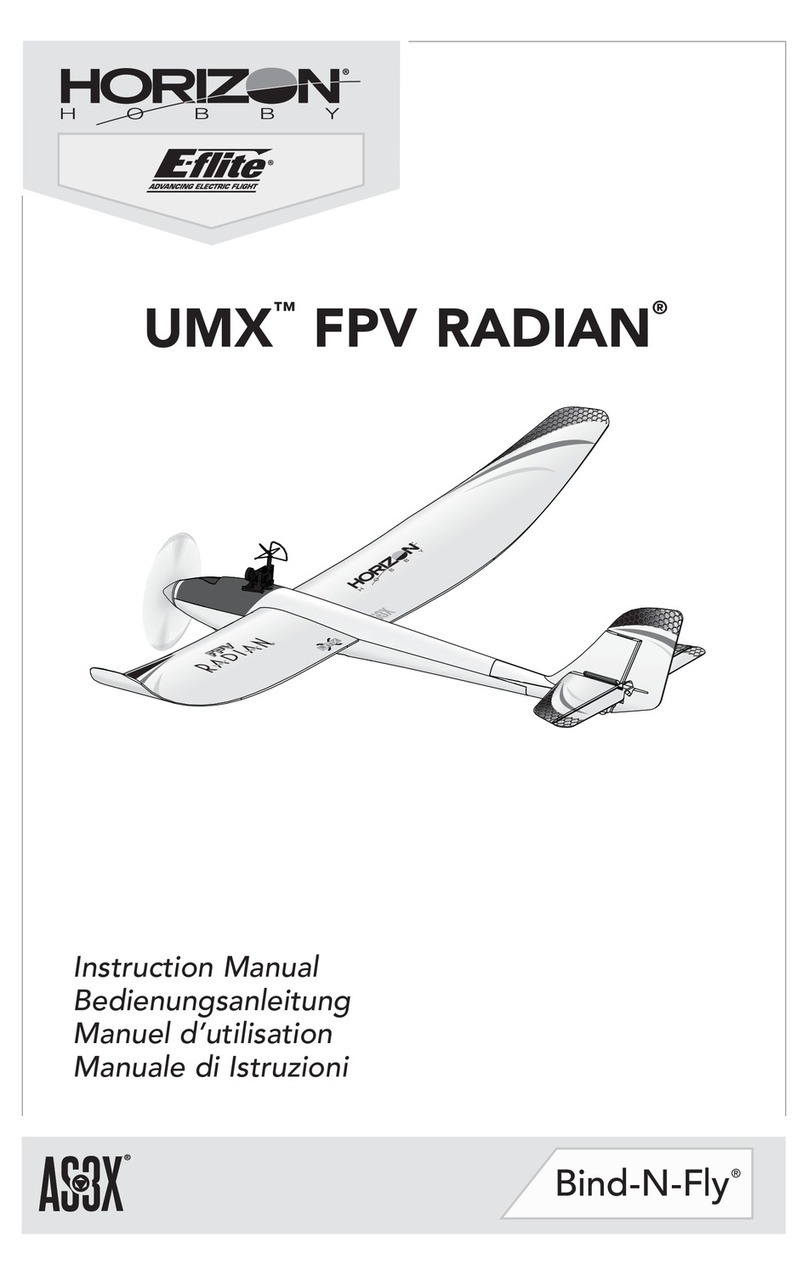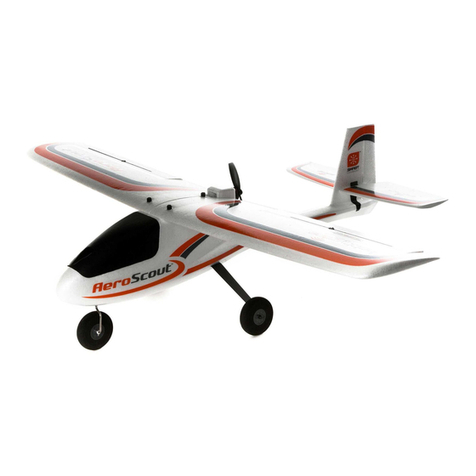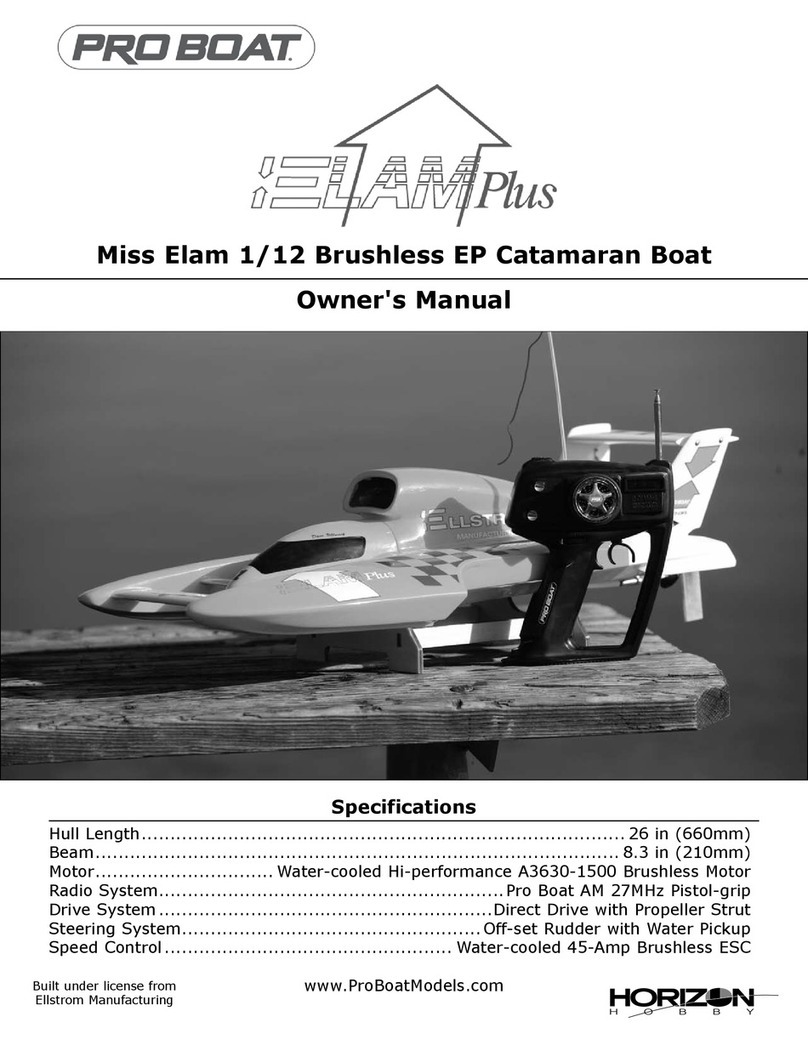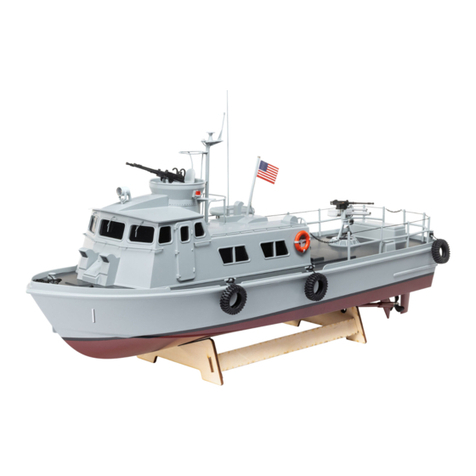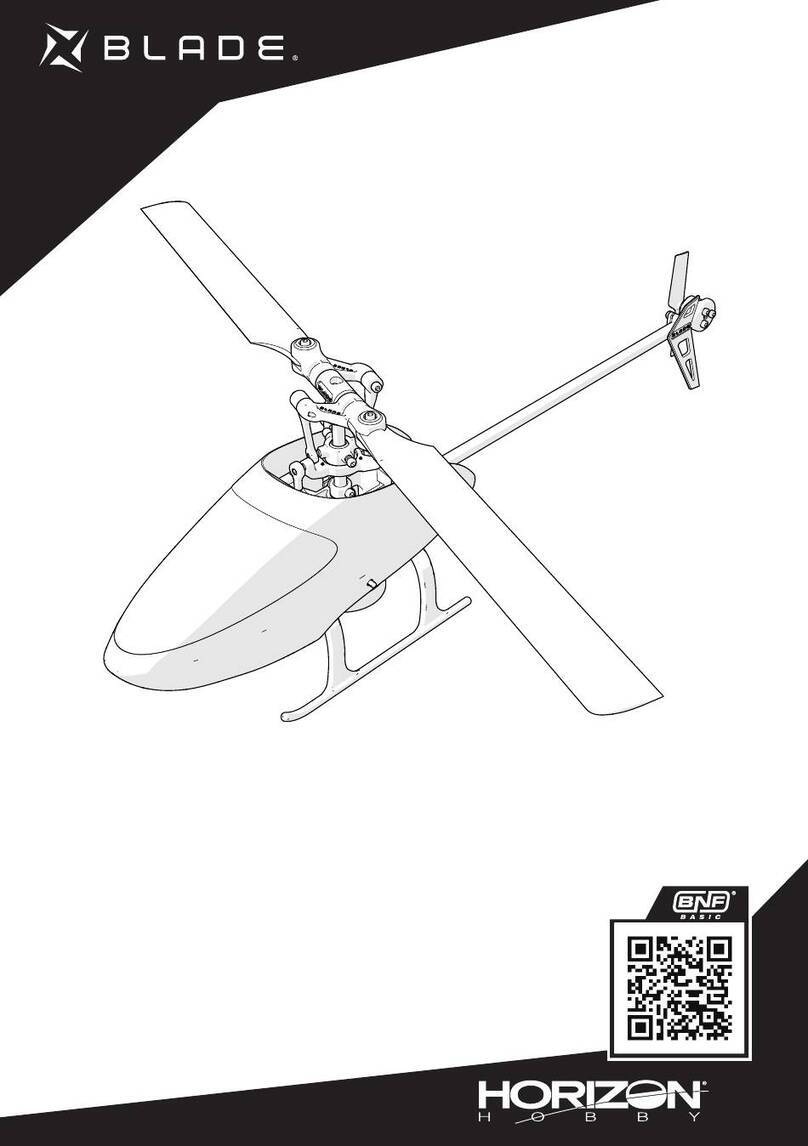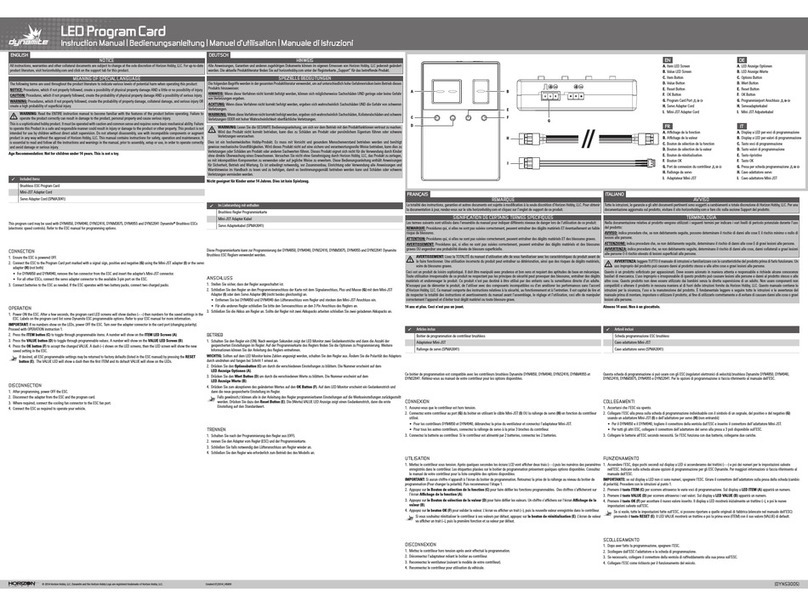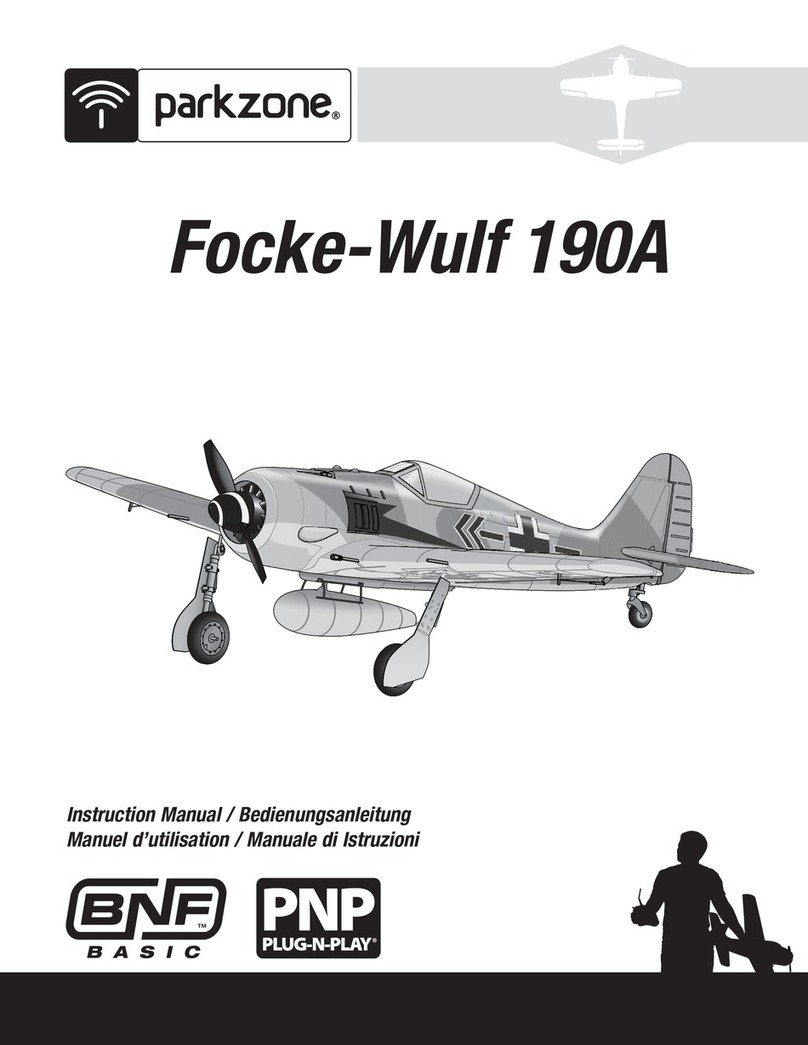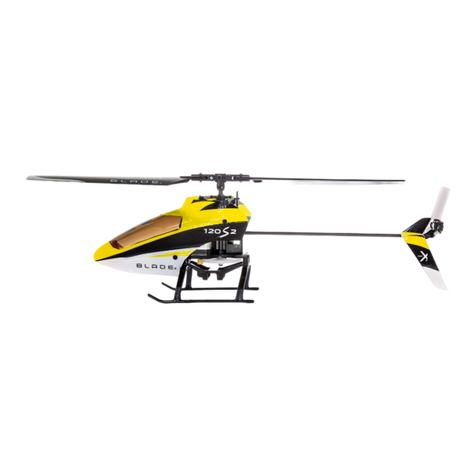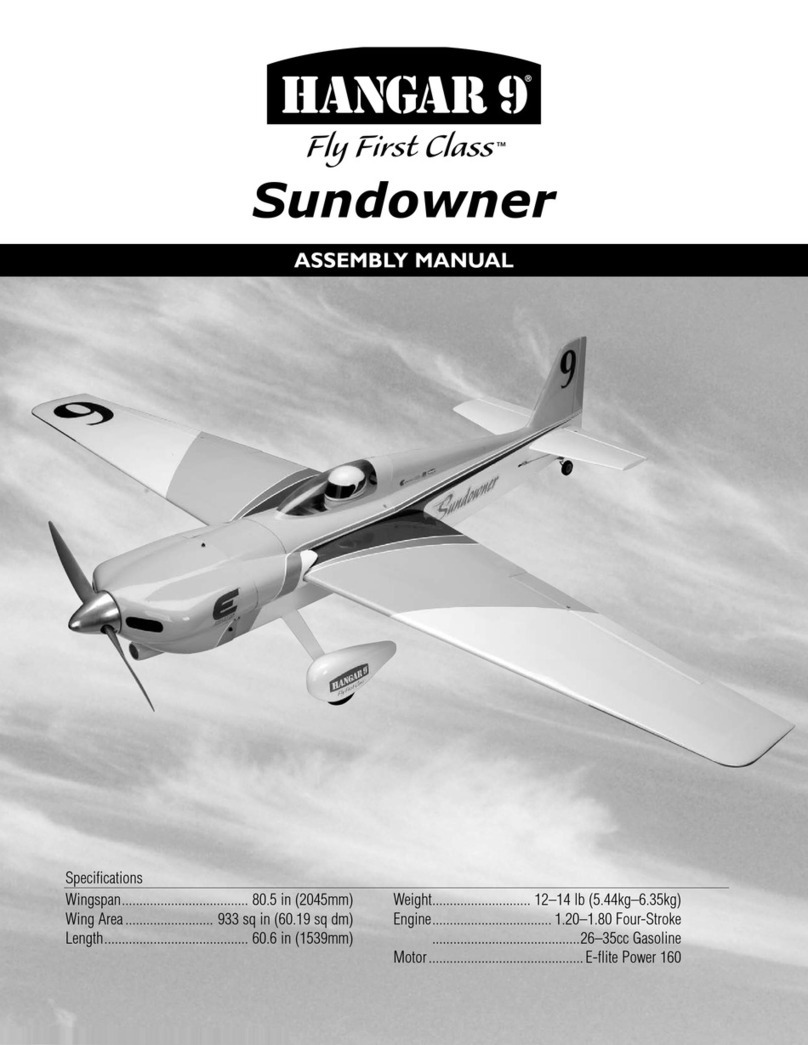6
Safety First
CAUTION: TO AVOID BATTERY
LEAKAGE OF AA BATTERIES FOR
TRANSMITTER
• Use AA batteries for transmitter.
• Make sure the batteries are inserted
with correct polarity and follow the
toy and battery manufacturer’s
instructions.
• After use, remove the batteries from
the transmitter to store.
• Do not attempt to short-circuit,
charge, disassemble or heat batteries.
Do not dispose of batteries in re or
get them wet.
• If battery uid contacts your eyes, skin
or clothes, immediately wash them
with water and consult a doctor.
• Do not mix new and old batteries
together in the transmitter.
Precautions Before Flight
Depending on ight conditions or due to
improper control, ying a helicopter can
be hazardous, resulting in unforeseen
accidents such as bodily injury and
property damage. The helicopter
operator shall be held responsible for
such an accident.
WARNINGS DURING PLAYING
• After use, store the helicopter in a
place out of the reach of children 3
years old or younger.
• To avoid hazards from improper use,
this helicopter is not intended for
children under 12 years old. Adult
supervision is required.
• Make sure you have plenty of open
space in all directions. Fly the helicop-
ter in a safe area away from people,
pets, etc.
• Do not y the helicopter toward a per-
son; otherwise, an injury may occur.
• Do not store the helicopter near a
heater or any place where the
temperature rises (e.g., a closed up
car in summer).
• Do not y the helicopter on windy days
or in bad weather conditions.
• Fly the helicopter away from roads,
railways and power lines, and avoid
crowded and narrow areas.
• If the helicopter gets stuck in a tree,
building or power line, do not climb to
retrieve it. Contact the owner or the
power company in such a case.
• Do not bring your face or hands near
the rotor. For safety, you are recom-
mended to wear goggles.
• Do not use the helicopter if it is irrepara-
bly damaged.
• When the helicopter is in ight, adult
supervision is required.
• Do not touch charging terminals
(i.e., the metal part) on the helicopter
body and the charger.
• The helicopter is intended for outdoor
use only.
• Do not point the transmitter antenna
toward a person or animal’s head,
otherwise, an unforeseen accident
may occur. Also, do not bend
the antenna.
• Never attempt to disassemble or
modify the helicopter.
• Do not bend or pull the components
with a strong force.
• Do not operate the helicopter with the
main rotor locked.
• Do not drop or smash the batteries,
transmitter or charger. Otherwise, the
charging port, charger, batteries or
transmitter may be damaged.
• When charging is complete, remove
the charger connector from the charg-
ing port on the helicopter, then unplug
the charger from the wall outlet.
• Check if a nearby transmitter is pro-
ducing interference or signals with the
same frequency. In such a case, move
to another place or wait until the other
RC user has nished operating his/her
vehicle.
Precautions
Handling of Li-Po Batteries
and Charger
This product contains a high-perfor-
mance Lithium Polymer battery. The
battery features large capacity and high
voltage and has a lightweight design,
which is best suited for use in RC heli-
copters. Because of the extremely large
energy content, be sure to handle the
battery with care.
CAUTION: TO AVOID BATTERY
LEAKAGE OF BUILT-IN LI-PO
RECHARGEABLE BATTERIES
• Charge batteries following the
battery and charger manufacturer’s
instructions.
• Charge batteries with the included
charger BEFORE the rst use.
• Do not charge batteries with a charger
other than the one included.
• Do not charge batteries, other than the
built-in Li-Po battery, with the included
charger or use the charger as the
power source for other equipment.
• Do not charge batteries within the
reach of small children.
• Do not drop or smash the batteries or
the charger during charging.
• Do not recharge a Li-Po battery that
is already fully charged or the battery
may be damaged. Li-Po batteries have
a low natural discharge rate and do not
require recharging in the rst one or
two hours after a charge.
• When charge is complete, unplug the
charger from the wall outlet.
• After use, be sure to turn the switch
off. Failure to do so may adversely
affect the batteries, resulting in a
disabled charge.
• Do not short-circuit battery terminals,
or the battery may swell and get hot,
leading to re.
• Do not heat, disassemble or modify
batteries. Do not dispose of batteries
in re or allow them to get wet.
• Do not use, store or charge batter-
ies in a place near a heater, or in high
temperature or humid conditions.
• When the run time of the battery
becomes shorter and shorter, it is
most likely time to replace the battery.
Battery Disposal
Instructions
The built-in Li-Po battery, when used
under normal conditions, is capable
of approximately 200 charge/discharge
cycles.
THIS PRODUCT USES A
LITHIUM POLYMER BATTERY
AND MUST BE RECYCLED OR
DISPOSED OF PROPERLY.
Contact your local area ofce of solid
waste management or other appropriate
local agency for information. Do not
attempt to disassemble the battery
before disposal.
Precautions
